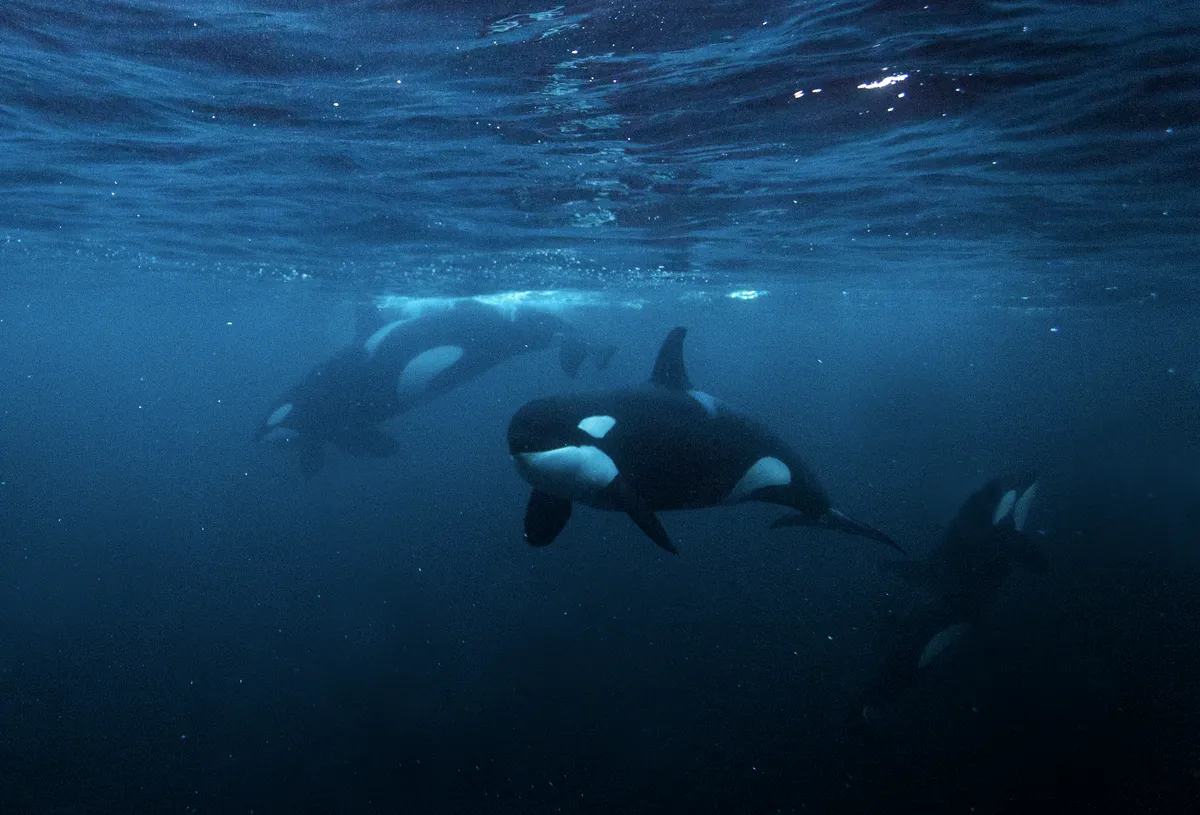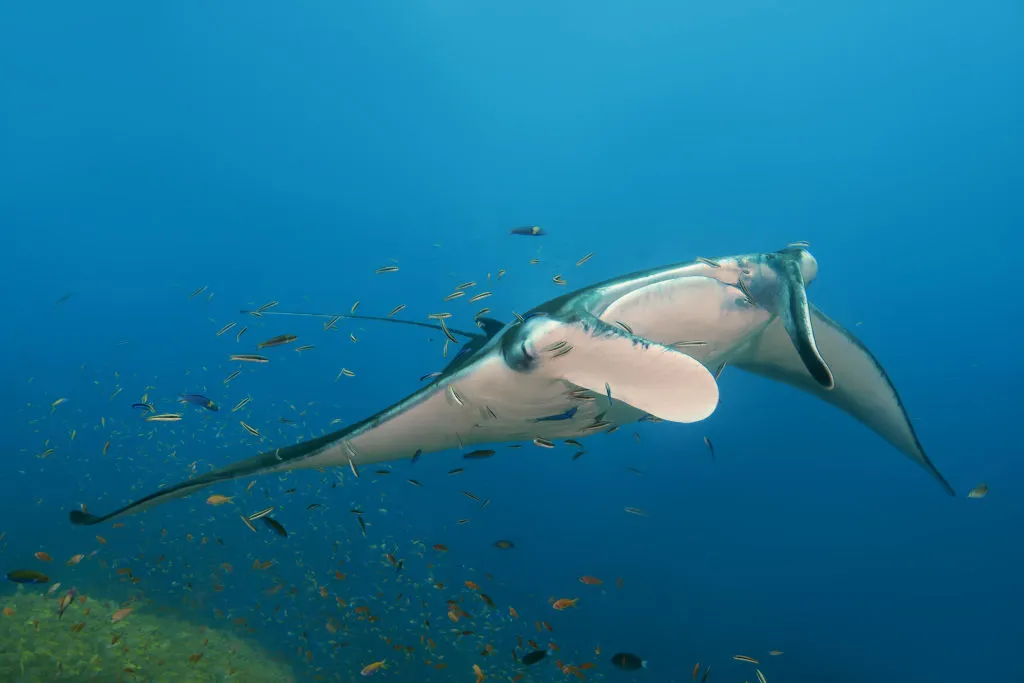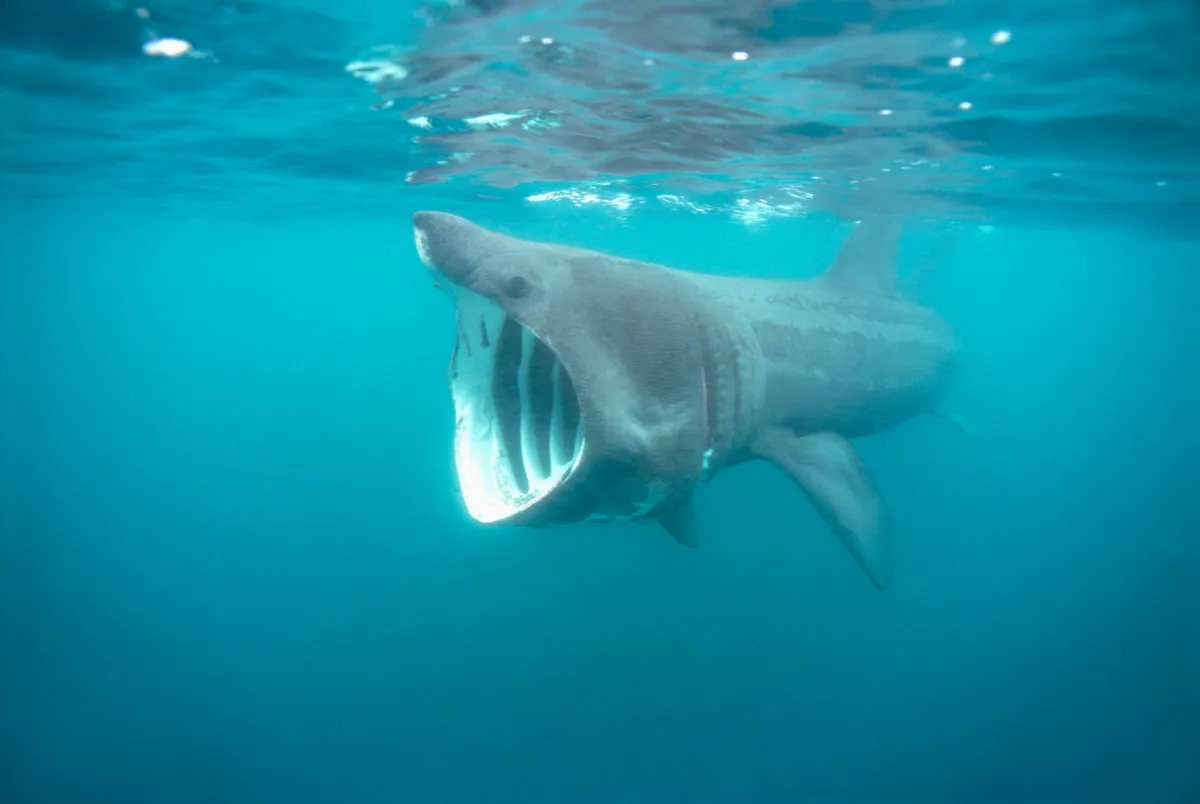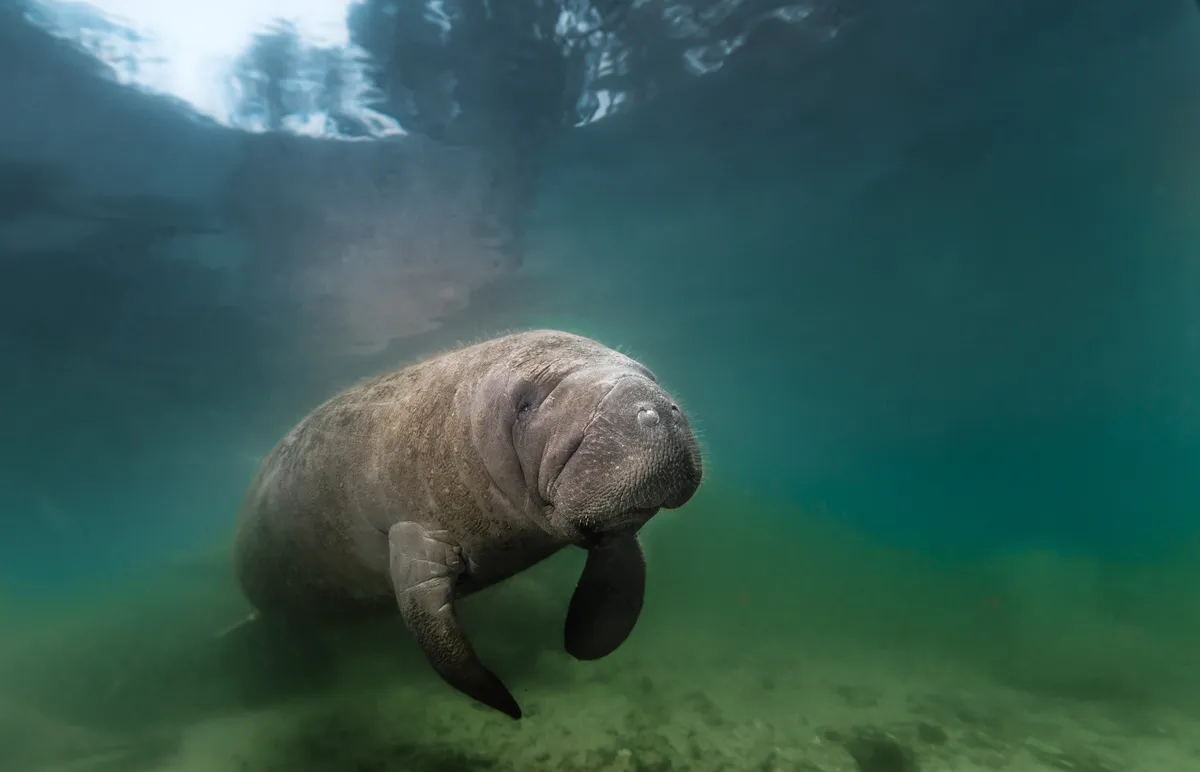Where to see whale sharks: Western Australia
The expert: Brad Norman is a marine biologist who has been studying whale sharks at Ningaloo Reef since 1994.
“Jumping off a boat into crystal-blue oceanic water 50m deep is thrilling enough, but knowing that you’re plunging into the path of the world’s biggest shark – up to perhaps 15m long – really sends your heart into overdrive.
At least 10,000 tourists do this every year at Ningaloo Reef, Western Australia, which is a World Heritage site.
There are more than 20 locations worldwide where you can swim with whale sharks, but Ningaloo is perhaps the best site of all; it’s certainly the most famous.
I often relive my first time: as I snorkel languidly at the surface, a creature as big as a bus powers towards me. The shark slides effortlessly past, seemingly unconcerned by my presence.
A giant shark, I say to myself, is within 5m of me – and there is no cage between us. Marine encounters truly don’t get much better.”
Top tip
When you enter the water and first see the shark, swim out to the side and stay at least 5m away. Try not to splash.
Where to see hammerhead sharks: Red Sea, Sudan
The expert: Jeremy Stafford-Deitsch is a photographer and the author of three books on sharks.
“Beyond the reef, out in the current, the hammerheads gather in schools. They are most likely to be seen on an early morning dive, but here, off Sanganeb Atoll in the Sudanese Red Sea, you must wait for them to come to you.
I plunge through the thermocline and down to the colder water that the hammerheads prefer. The current is strong, so I work against it with biting fin strokes while controlling my breathing.
I gaze into the crepuscular emptiness then clang my knife against my air tank a few times. The shimmer of a distant ghost appears through the haze; then several others materialise, followed by many more solidifying forms.
A school of scalloped hammerhead sharks populates the liquid half-light, their beautifully ugly, flattened heads jerking from side to side.
In a few thrilling seconds, their primitive curiosity is satisfied – I am inedible – and they turn as one to return to a gloom I cannot enter.”
Top tip
Wherever you go, expert local knowledge is vital, as are good diving skills.
Where to see sealions: Galápagos islands, Ecuador
The expert: Tui De Roy is a wildlife photographer and author who spent 40 years living in the Galápagos and still returns there frequently.
“From the moment I hit the water, I know the tables are turned. I thought I was going to be the observer – but I quickly realise that all eyes are on me, and the curious young sealions are eager to engage in rambunctious play.
These underwater aerialists put on quite a show, transforming this undersea realm into a veritable circus. They are full of confidence, reassured by their strength in numbers and bursting with energy, still nourished by their mothers’ milk.
The sealions dart, spin, turn, loop and leap, while blowing bubbles and chasing each other in tight circles.
They egg each other on – some come closer and closer, heading straight for my mask, then veer away adroitly at the last moment, constantly watching my reactions.
Their greatest joy – and mine – comes when I try to imitate them by turning somersaults of my own. My clumsy antics drive them wild, and they circle me in ever-tighter loops.
Their agility makes me feel like a floundering cow, and I nearly drown in my own laughter as I fail miserably to keep up.”
Top tip
Engage the sealions’ curiosity by copying their movements or swimming in short bursts then stopping. Trying to get too close will only put them off.
Where to see orcas: Norway

The expert: Zoologist and BBC Wildlife columnist Mark Carwardine is never happier than when swimming with a top marine predator.
“Tysfjord is Norway at its deepest, narrowest and moodiest. Winter daylight is in short supply, and the air is very, very cold. We head out to sea in a small boat, and I’m ready for action, dressed in a drysuit, mask and snorkel.
I keep an eye out for the familiar dark dorsal fins of the world’s apex marine predators – orcas.
Once we’ve spotted a pod, we try to get ahead of it and then jump into the water so that the animals swim right past us. There’s no guarantee that it will work, but I plunge into the frigid fjord anyway and wait.
Staring into its cold, dark depths, I am suddenly engulfed by a huge school of herring. A moment later, I feel a swishing movement and turn to see an adult female orca disappearing into the murk in hot pursuit. For the brief moment she’s in my field of view, the killer whale appears much bigger than she did from the sanctuary of the boat.
Moments later the entire pod surrounds me, stunning fish with slaps of their powerful tails before picking off their prey, one by one. I am floating right in the middle of their meal.”
Top tip
Don’t try to chase after the orcas – just lie still on the surface and watch.
Where to see humpback whales: Tonga
The expert: Sue Flood is a wildlife photographer and film-maker who specialises in polar and marine environments and species.
“In the crystal-clear waters of the South Pacific, off the coast of the Vava’u Archipelago in the Kingdom of Tonga, we watch a female humpback whale apparently dozing near the surface. Her young calf, just a few weeks old, is nearby, and the mother lazily opens one eye to take a better look at us.
Satisfied that we pose no threat to her or her precious offspring, she drifts back to sleep, allowing us so close that we can see the wrinkled skin around their eyes and even the tiny whale lice clustered in folds in their bodies.
At this point my husband, wildlife cameraman Doug Allan, and I have been filming the humpbacks for nearly 10 weeks for the BBC series Planet Earth.
We have been swimming with this pair many times; perhaps that’s why mum is so relaxed in our presence. Then again, every year hundreds of people swim with the whales here, so they probably know by now that they have nothing to fear.
I’ve been fortunate enough to have enjoyed some amazing encounters with marine mammals in my 25-year career, but nothing beats this. At one point, mum swims close and looks me in the eye – a heart-stopping moment that will stay with me forever.”
Top tip
When swimming with humpback whales, move very slowly and gently, and let them come to you.
Where to see green turtles: Barbados
The expert: Charlie Hamilton James is a wildlife photographer, cameraman and TV presenter.
“Tumbling over the side of the boat into the warm waters of the Caribbean, I look around. Immediately some dark shapes below start moving my way. As they get closer, they resolve into a group of green turtles.
They come right up to inspect me, and I fall in love with them on the spot. They’re so graceful in the water, a complete contrast to their lumbering movements on land.
Local operators have been feeding them strips of fish for years, and the turtles no doubt think I’ve got my own secret stash. I spend half an hour in the water with them, during which I’m even graced with the company of a couple of hawksbills as well. I return here almost daily for three weeks.
Research by the Barbados Sea Turtle Project (BSTP) suggests that the turtles are passing through these waters and suffer no ill effects from human contact. So you can enjoy a magical encounter with a clear conscience.”
Top tip
Never attempt to chase, grab or feed the turtles – they are easily stressed.
Where to see manta rays: Maldives

The expert: Reinhard Dirscherl is an experienced diver and specialises in marine and travel photography.
“As the cry of “Manta! Manta!” rings out over the vermilion blue waves of South Ari Atoll, I prepare to dive. Just 15m below the surface hundreds of cleaner wrasse surround a small coral block.
Three manta rays soon join them at their cleaning station. They circle around, each time approaching within a few metres of me.
It’s unnerving to see these massive creatures, their mouths wide open as they feed on the plankton-rich waters, coming towards you at speed. But I know that I have nothing to fear: they are truly gentle giants.”
Top tip
Manta rays congregate at cleaning stations – so wait at one, too
Where to see basking sharks: UK

The expert: TV presenter and BBC Wildlife columnist Nick Baker loves swimming with sharks, from great whites to dogfish.
“It’s strange meeting a basking shark. Even though I know that its immense bulk is fuelled entirely by tiny crustaceans, I’m still nervously chewing the little rubber blocks off my snorkel.
But it’s hard to stay cool as a vast, pale maw the size of an inglenook fireplace comes hurtling towards you, gills billowing like satin sheets in the wind, seemingly engulfing the entire ocean as it moves.
This is my first encounter with this mighty fish and what makes it so much sweeter is that I’m bobbing around in the water off the Lizard Peninsula in Cornwall. It’s amazing what you can find off our coasts.
Top tip
If you want to get close to basking sharks, position yourself ahead of them and hang in the water like a jellyfish.
Where to see stingrays: Cayman Islands
The expert: environmental journalist and former BBC Wildlife staff member James Fair visited the Cayman Islands in 2006.
“With a chunk of squid grasped in my right fist, I dive beneath the surface of North Sound and offer it to the creature on the sandbar at my feet.
The stingray locates the prize and then there’s a strange rasping sensation as it hoovers up the treat.
I look around: stingrays with 1m wingspans litter the seafloor, moving towards me like a group of alien life forms from Doctor Who. I’m going to need a lot more squid.”
Top tip
Whenever you feed a stingray, make sure you keep your thumb tucked in to avoid it being sucked into the fish’s mouth.
Where to see manatees: Florida, USA

The expert: Alexander Mustard is a marine biologist who has worked as a professional underwater photographer since 2004.
“Mist hangs over the dark waters and I am pleased to see the first rays of sunlight stretching across Three Sisters Spring. It’s dawn, and I’m right on time. In Florida, the early snorkeller catches the manatee.
During winter, these animals seek out the warm waters here to keep them toasty while they sleep. On particularly cold nights, the springs fill up like dormitories and if you arrive early you can expect quite a reception.
There is no need to keep your distance – the manatees actively seek you out. Life for them is an itchy business, and there is nothing they like more than a good ol’ scratch. And they know just where to get one.
A manatee will swim right up to you, turn on its side or back and rub its flippers on its belly, leaving little doubt as to what it wants you to do. And if you perform a satisfactory service, one individual may bond with you all morning, returning to you again and again.”
Top tip
The less you move in the water, the more manatees will be attracted to you.
Main image: Whale shark feeding with its mouth open, in Ningaloo Reef, Western Australia. © James D Morgan/Getty
